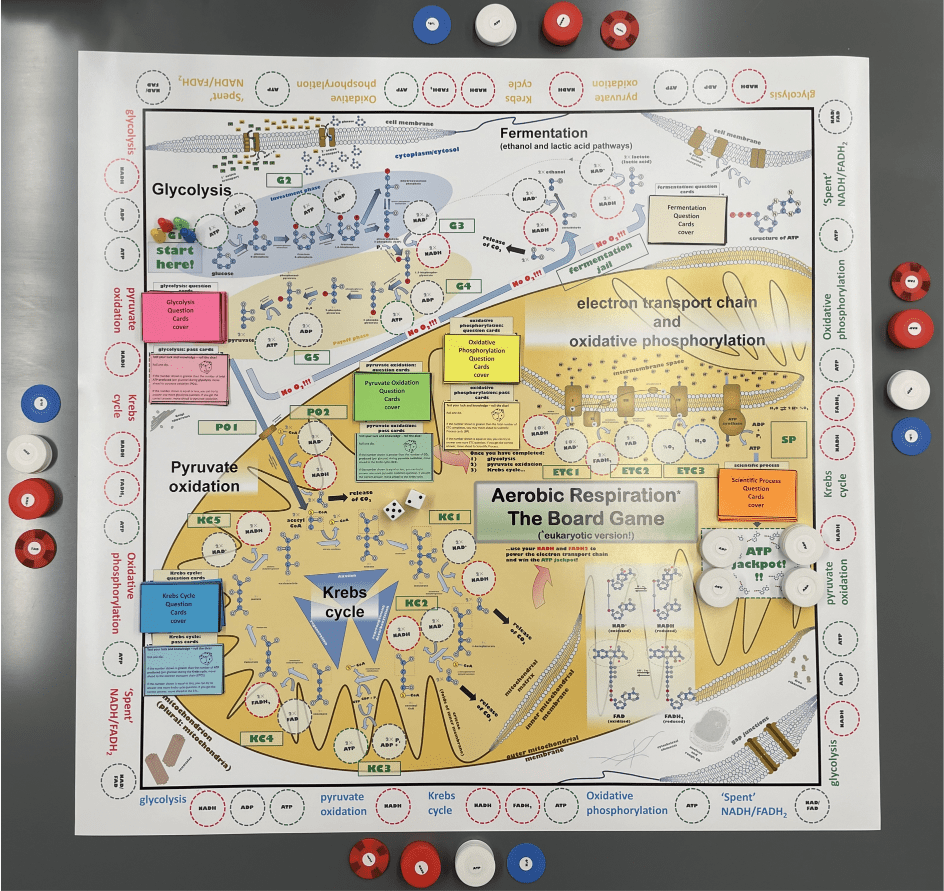
Cellular respiration is a daunting topic for many students in introductory biology courses. Students are challenged at conceptual and factual levels, since instruction covers multiple metabolic pathways occurring across different cellular compartments, involving abstract energy and electron transfers through diverse chemical reactions. Lecture-based instruction may clearly convey details of cellular respiration to students, but the complexity of this topic suggests alternative, active learning strategies may improve student comprehension and retention. I designed an original board game as a teaching tool for cellular respiration, targeted at improving learning outcomes for advanced high school, introductory undergraduate, and upper-level undergraduate biology students. “Aerobic Respiration: The Board Game” applies multiple learning strategies (quiz questions, student-completed study table, visual, tactile and quantitative learning, and game-play) with the goal that students are simultaneously entertained and invested in understanding this complex topic. Initial application in a small undergraduate introductory biology section (ca. 25–30 students) suggested improved student understanding of some aspects of cellular respiration. Use in a longer class or lab period and simplification of game board design and instructions should improve effectiveness of the game. Students had significantly favorable perceptions of the game as a learning tool. Included game board and game cards are provided to reflect multiple student academic levels, and are fully editable. Ordering information for materials and game pieces is also included.
Primary Image: Example setup for Aerobic Respiration: The Board Game.